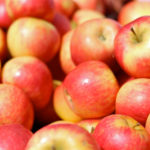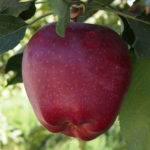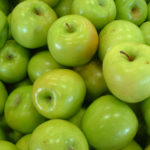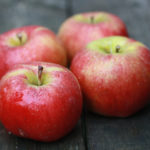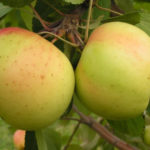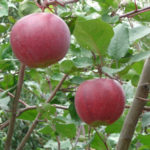Pear variety Yanvarskaya
Any gardener knows that the key to the successful cultivation of pear trees is the reliability of the variety. The All-Russian Scientific Research Institute for Breeding Fruit Crops has been working on breeding new varieties of pears for over 45 years. During this time, a large number of crops have been created that are promising for private and industrial gardening. Among them is a variety with an unusual name for a fruit tree - Yanvarskaya. It appeared in 1955 at VNIISPK as a result of hybridization of Bere Tolstobezhka (Bere Dil and Ussuriyskaya pear) and Forest beautiesconducted by a group of scientists: E.N.Sedov, A.V. Parshin, N.G. Krasova, M. V. Mikheeva. In 1977, the new product was allocated to the elite. Not yet entered into the State Register of the Russian Federation. Sources indicate that since 1983, the culture has been on state testing, which is carried out in the middle zone of horticulture. According to experts, the variety is of significant interest for home and industrial gardening in the Oryol and adjacent regions. Until recently, our heroine occupied a leading position as a winter variety, but with the advent of the pear, Lyra lost the palm in taste and appearance.
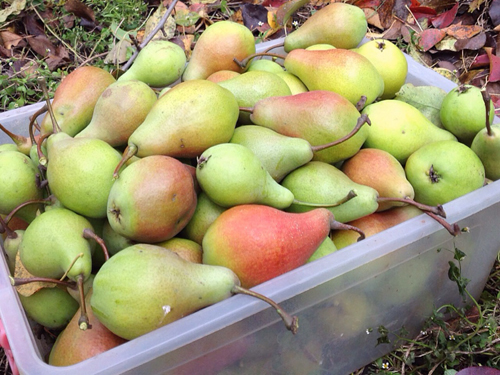
Description
According to the description, the tree is not very large, the crown is compact, wide-pyramidal in shape. Skeletal branches are powerful, straight-growing, the angle of attachment to the trunk is close to straight, the ends of the branches are directed upwards. The bark of the trunk and skeletal branches is flaky. Shoots are curved, rounded in cross section, brown, not pubescent. Moderate leafiness. Leaves are dark green, of regular size, broadly rounded, with a short-pointed apex, a smooth, small-crested edge. The leaf blade is concave, curved downward, its surface is smooth, shiny, the nerve is tender. Leaves on the shoot are rare. The petiole is thin and long. Stipules are elongated, saber-shaped. The branches are rarely overgrown with fruit wood, so the impression of a strong thickening is not created. The fruits are located singly, they are fairly evenly distributed in all parts of the crown. The pear harvest is formed on ringlets and fruit twigs, which grow on perennial wood.
The fruits of the variety are one-dimensional, have a wide-rounded shape, somewhat beveled, wide-ribbed. Medium in size, usually fruit weight reaches 150 - 200 grams. In some years, when the yield was rationed, the ripe fruits of Yanvarskaya weighed up to 240 grams, and the weight of some specimens exceeded 500 grams. There is no funnel. The saucer is small, grooved. Open cup. The cup-shaped tube is short and wide. Bulbous heart of medium size. The seed chambers are small, closed. The peduncle is erect, curved, short and rather thick. The skin is not thick, dull, smooth, dry and rough to the touch. At the moment of removable maturity, the main color is greenish, with a slight brownish-red tan on the illuminated side. When it comes to the consumer period, the surface of the pear turns greenish-yellow, and the blush turns red or rose-red. The subcutaneous dots are green, well visible, numerous. The appearance is quite attractive, estimated at 4.2 - 4.4 points. The pulp is white, with a slight greenish tinge, juicy, dense, prickly, fine-grained consistency. The taste is sweet. For taste, fruits received an average rating of 4.3 points. 100 grams of pulp accumulates: sugars 8.2%, titratable acids 0.11%, pectin substances 3.1%, ascorbic acid 6.0 mg, P-active substances 3.1%.
Characteristics
- Some sources call the January early-fruiting crop, capable of entering the fruiting period 3-4 years after planting a grafted one-year-old seedling. According to other sources, the first harvest ripens in 5 - 6 years;
- focusing on the timing of ripening, the variety is classified as winter. In the conditions of Oryol, harvesting maturity occurs in mid-September. According to the observations of gardeners, in the Ryazan region, the crop is ready for harvest in the third decade of September;
- the attachment of pears to the branches is strong, there is no pre-harvest fall;
- the yield is good. According to VNIISPK, it is 100 - 130 c / ha;
- fruiting cannot be called stable, but the frequency is not pronounced over the years;
- the level of frost resistance is insufficient. After a harsh winter, the tree is damaged up to 3.0 points. The bark, wood and fruit formations suffer. Winter hardiness in the Moscow region is estimated at 3.5 points. Although there is evidence that the plant tolerates unfavorable periods more persistently and even bears fruit;
- the immunity of the variety is also assessed as mediocre. The resistance to scab is average. But again, some gardeners argue with this assessment, since in their gardens January showed good resistance of leaves and fruits to this fungal disease;
- keeping quality is high. The pear harvest can be stored in a refrigerator at a temperature of + 2 ° C for about 3 months, at the same temperature, but packed in plastic bags - 5 months (while the amount of waste is quite low - only 5%). At -1 ° C, the shelf life was 4 months. The duration of the shelf life affects the ripening period, the longer the fruits lie, the longer (up to 20 - 25 days) the ripening period;
- the way of using is universal.
A feature of the variety is the hardening and coarsening of the pulp in the case of picking up unripe fruits and storing them at low temperatures. At temperatures from + 2 ° C and above, this process is not observed, but the shelf life is shortened.
Yanvarskaya is highly valued for its marketability and taste, long shelf life and consumption, and universal use. The yield does not fail, although in the process of fruiting, a not clearly expressed periodicity was noticed. The culture is unpretentious; standard agricultural technology is used when growing. In central Russia, the tree winters well, with the exception of too frosty winters. In unfavorable years, a pear can be affected by diseases, therefore, increased attention should be paid to prevention.
